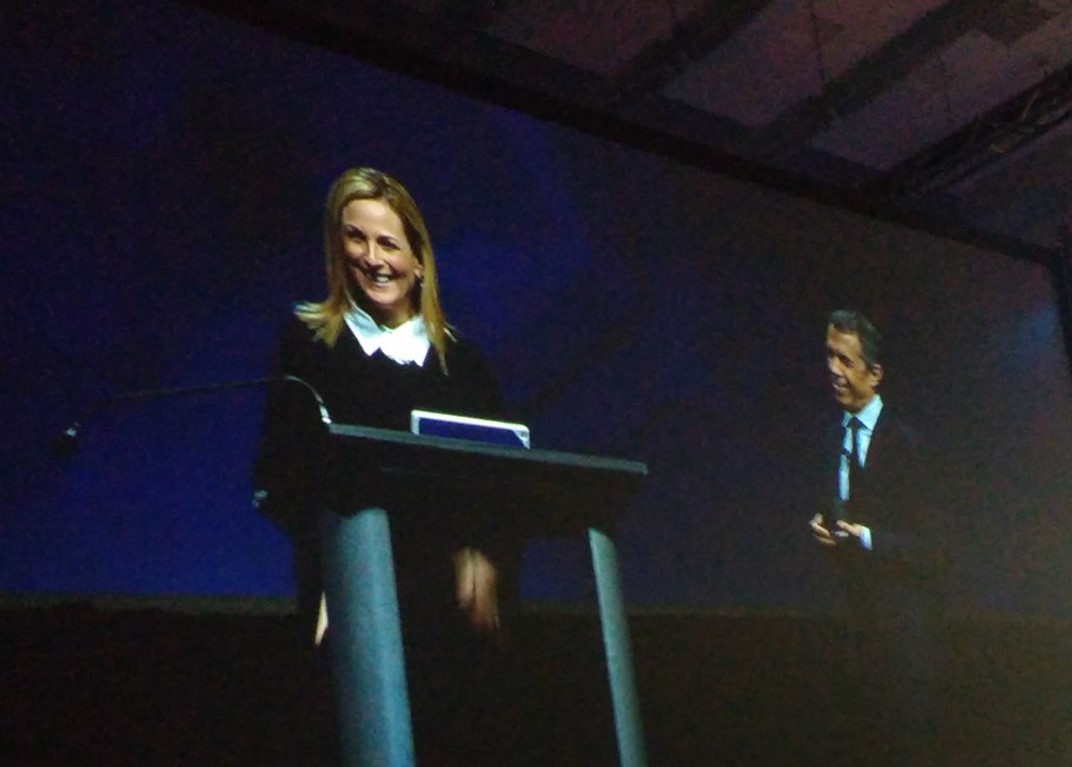It was a convicting moment.
I was at my desk, doing research on the deaf community in preparation for an interview with actress Marlee Matlin, the keynote speaker at TCEA 2018. Struggling to make headway, I asked my daughter Kawai for help. Kawai, a high-school senior, is studying American Sign Language and has a heart for the deaf and hard of hearing culture. I asked if she had any insights that might be helpful. She didn’t mince words.
We do a poor job providing services that people who are deaf or hard of hearing need, Kawai said. She pointed out that many hospitals don’t have on-staff ASL interpreters for patients with these needs. Same thing with churches, she said — very few have ASL interpreters or closed captioning for parishioners who are deaf. And in schools, Kawai said, students who are deaf may have special classes and interpreters, but if they have a problem and need to talk, they don’t usually have access to a counselor who can understand their unique needs (like the one Matlin plays on “Switched at Birth.”).
“It’s like they’re invisible,” she said.
Ouch. Her words made me cringe. How, in a world with advanced technologies and increased commitment to diversity and inclusion, are students with disabilities “invisible” and underserved? Where are we missing the mark?
The diverse spectrum
One of the most misunderstood aspects of diversity is that people who are disabled, deaf or hard of hearing are members of the diverse spectrum, says Matlin.
“We are just coming to the table now,” she says. “Deaf and hard-of-hearing people are part of such a rich culture. We are educating people about the culture.”
Deafness is more than just hearing aids, sign language or not being able to hear; it includes language, educational background and history, Matlin explains. It’s about the first moments after a child is diagnosed as deaf or hard of hearing — understanding that the child is not going to be like other children while at the same time realizing that they need to be respected and included.
“There needs to be a desire on their part to be themselves and not be seen as people simply who can’t hear or speak,” says Matlin.
She cites the example of actors and performers who are deaf who are passed over for opportunities in television or film because writers can’t see past their deafness.
“[Writers] don’t understand that there are many deaf people capable of playing these roles,” she explains. Instead, they assume that it will be hard to write for a deaf character or that they will need to make the story about being deaf. But that’s shortsighted, Matlin asserts, using her own career as an example. She names writers — including Aaron Sorkin from “The West Wing” and Michael Seitzman on “Quantico” — who have created roles for her based on a character and not on her deafness. “They know that they can create characters who just happen to be deaf and that creates a more diverse cast,” Matlin says.
Combating lack of understanding
So how do we move past assumptions and help level the playing field for students who are deaf, hard-of-hearing or who have disabilities? Matlin offers these suggestions.
Put them in the drivers’ seat. Encourage students to create their own work, suggests Matlin. Social media and streaming channels now offer myriad of vehicles through which students to can tell their story. Teach them to network, build relationships, pitch ideas and write scripts. And foster resilience. “You need to get yourself out there; that’s the way you do it,” Matlin says. “I’ve been around for 32 years. Every day is still a fight.”
Treat them as individuals. People with disabilities and people who are deaf and hard of hearing have unique needs and yet there’s a tendency to lump them together into one group, according to Matlin. “We’re not all the same,” she says. “Some of us sign, some of us learn to speak, some of us do both. Some of us wear hearing aids, some of us don’t. Some people use wheelchairs, some of us don’t. There’s a whole spectrum.”
Improve technology. Technology has provided many benefits to those with disabilities, says Matlin. Computers have opened access to information and applications such as texting, Face time and video-relay services, among others, have improved lines of communication.
And yet, there’s still work to be done, Matlin asserts. She cites the example of SOS audio notifications on phones and sirens for tornado warnings; these don’t work for this who are deaf or hard-of-hearing. Closed captioning also needs to improve, she says, citing places that lack this service, such as movie theaters, public announcements, planes and airports.
“There’s still a great number of pluses than there are minuses but still we [have] a lot of work to do,” Matlin says. “I’m not complaining. But there’s room for fixing and improving.”
Kanoe Namahoe is the editor of SmartBrief on EdTech and SmartBrief on Workforce.
Tech Tips is a weekly column in SmartBrief on EdTech. Have a tech tip to share? Contact us at [email protected]
____________________________________
Like this article? Sign up for SmartBrief on EdTech to get news like this in your inbox, or check out all of SmartBrief’s education newsletters, covering career and technical education, educational leadership, math education and more.
